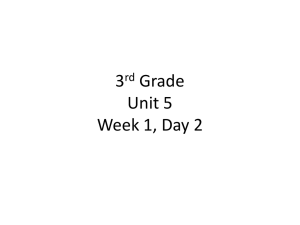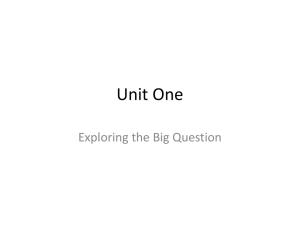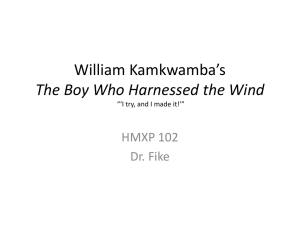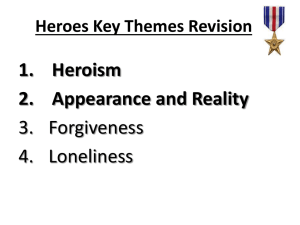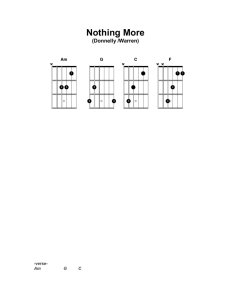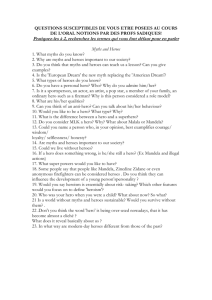Heroism: An Analysis of the Personal
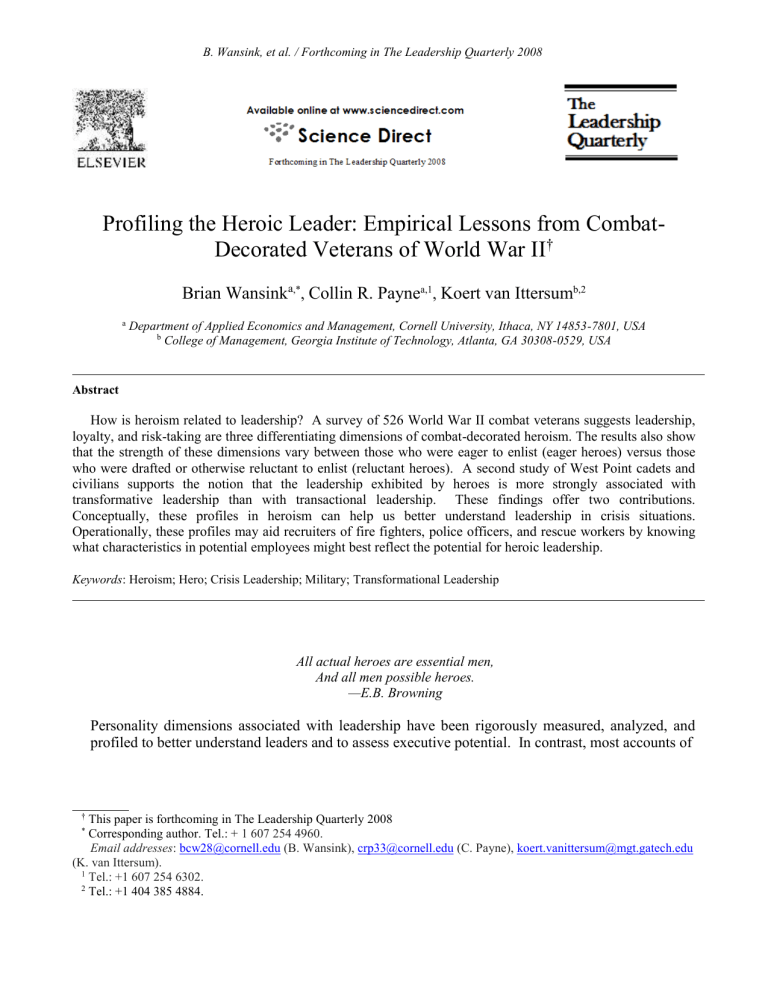
B. Wansink, et al. / Forthcoming in The Leadership Quarterly 2008
Profiling the Heroic Leader: Empirical Lessons from Combat-
Decorated Veterans of World War II
†
Brian Wansink
a ,* ,
Collin R. Payne
a,1 ,
Koert van Ittersum
b,2 a Department of Applied Economics and Management, Cornell University, Ithaca, NY 14853-7801, USA b College of Management, Georgia Institute of Technology, Atlanta, GA 30308-0529, USA
Abstract
How is heroism related to leadership? A survey of 526 World War II combat veterans suggests leadership, loyalty, and risk-taking are three differentiating dimensions of combat-decorated heroism. The results also show that the strength of these dimensions vary between those who were eager to enlist (eager heroes) versus those who were drafted or otherwise reluctant to enlist (reluctant heroes). A second study of West Point cadets and civilians supports the notion that the leadership exhibited by heroes is more strongly associated with transformative leadership than with transactional leadership. These findings offer two contributions.
Conceptually, these profiles in heroism can help us better understand leadership in crisis situations.
Operationally, these profiles may aid recruiters of fire fighters, police officers, and rescue workers by knowing what characteristics in potential employees might best reflect the potential for heroic leadership.
Keywords : Heroism; Hero; Crisis Leadership; Military; Transformational Leadership
All actual heroes are essential men,
And all men possible heroes.
—E.B. Browning
Personality dimensions associated with leadership have been rigorously measured, analyzed, and profiled to better understand leaders and to assess executive potential. In contrast, most accounts of
†
This paper is forthcoming in The Leadership Quarterly 2008
* Corresponding author. Tel.: + 1 607 254 4960.
Email addresses : bcw28@cornell.edu
(B. Wansink), crp33@cornell.edu
(C. Payne), koert.vanittersum@mgt.gatech.edu
(K. van Ittersum).
1 Tel.: +1 607 254 6302.
2 Tel.: +1 404 385 4884.
B. Wansink, et al. / Forthcoming in The Leadership Quarterly 2008 the personality dimensions associated with heroism (versus leadership) are historically (Ambrose,
1993), sociologically (Stouffer, 1949), and journalistically (Marshall, 1946) anecdotal rather than empirical. Yet if heroism could be profiled, it could improve our conceptual understanding of leadership during crises. Furthermore, it could provide insight into the recruitment and training of those in hazardous professions, such as the military, fire fighting, law enforcement, and rescue work.
Following a conventional dictionary definition, heroism refers to “the qualities of a hero or heroine; exceptional or heroic courage when facing danger (especially in battle)” (Wordnet, Princeton). A hero is defined as a person “distinguished by exceptional courage and nobility and strength” (Wordnet,
Princeton).
One reason why heroism has not been examined may be because heroes are difficult to readily identify and are not available in large numbers. Unlike successful leaders, heroism is infrequently observed except in extreme situations. While there are everyday instances of heroism among police, fire fighters, and rescue personnel, these often go unrecorded or even forgotten other than to those fortunate individuals or families involved.
On a large scale, heroism in extreme situations occurs more frequently during times of war. To obtain sufficient data to examine heroism, we surveyed 526 combat veterans from World War II, 83 whom received a medal for heroism. After identifying commonly noted anecdotal descriptions of heroes, we investigated whether these characteristics were able to distinguish men who had been awarded medals for heroism from those who experienced similar levels of combat but who received no such medal. By doing so, we show the extent to which these heroes have leadership characteristics that differentiate them from other men. Furthermore, we integrate these results into the larger theoretical leadership framework of transformational and transactional leadership styles.
Understanding the characteristics that define heroes will help to clarify the relationship between heroism and leadership. First, understanding the characteristics of potential heroes may be useful in recruiting and training soldiers and those who wish to be employed in hazardous professions (including police, firefighters, and rescue workers). Second, understanding the characteristics of heroes may also allow for enhancing specific characteristics to stimulate heroic tendencies in otherwise average soldiers, police officers, firefighters, and rescue workers. Last, understanding the characteristics of heroes adds a theoretical supplement to traditional leadership frameworks.
I. A Framework of Heroism
The context of heroism provides some of the richest and most memorable anecdotes of leadership inspiring others. Consider the dramatic contexts involving soldiers who received medals for heroism.
The criteria for awarding medals such as the Bronze Star, Silver Star, Distinguished Service Cross, and
Congressional Medal of Honor can include rescue (such as saving a comrade at great personal risk), extra aggressiveness (such as single-handedly charging a pillbox), grenade situations (such as absorbing the full brunt of enemy firepower), rear defense (such as delaying or holding off the enemy while fellow soldiers escape), refusing medical aid (such as continuing to fight despite physical injury), and leadership (such as spontaneously taking command or showing leadership under extremely difficult circumstances) (Gal, 1981; Blake, 1976).
The ambiguity surrounding the leadership experience in these extreme contexts is not well understood. Indeed, few efforts have been made to profile heroes other than anecdotally. Part of this anecdotal evidence of heroes is that they are leaders who are willing to take risks and are highly affiliated with their group (Egbert, Cline, & Meeland, 1954; Griffith, 2002; Jobe, Holgate, &
Scrapansky, 1983; Kellett, 1990). In addition, situational circumstances (such as rescue situations, situations that require extra aggressiveness, or denying medical help) provide an extra context from which leadership characteristics produce heroic behavior. As a basic framework (see Figure 1), it may
B. Wansink, et al. / Forthcoming in The Leadership Quarterly 2008 well be that winning a medal for heroism is a function of being the right person (personality characteristics) at the right time (situation circumstances).
Personal Characteristics
Leadership
Risk-taking
--Eager enlistee (adventurous)
--Reluctant enlistee (selfless)
Affiliation
Medal for
Heroism
Situational Circumstances
Rescue
Extra aggressiveness
Grenade situations
Rear defense
Refusing medical aid
Fig. 1.
Military medals awarded for heroism are the combined result of personal characteristics and situational circumstances.
Historical, biographical, and even fictional accounts of heroes show notable consistency in their description of the character traits – and often even the background – of those they describe as heroes.
The singular view of our almost mythical view of such heroes was perhaps best articulated in Joseph
Campbell’s
A Hero with a Thousand Faces (1949). A sample of 50 descriptions of heroes in newspaper accounts, biographies, literature, and history was used to generate a list of 73 characteristics that were mentioned at least twice. A subsequent card-sorting task by seven individuals suggested that these traits clustered around three basic dimensions that were worthy of further examination.
The leadership dimension. Heroes were often anecdotally thought to have similar characteristics of leaders in other contexts (see Nice, 1984; Mahan & Clum, 1971; Lau, 1998). Some of these frequently mentioned leadership qualities included self-discipline, resourcefulness, and high self-worth (Wong,
Bliese, & McGurk, 2003; Sümer, Sümer, Demirutku, & Cifci, 2001; Looney, Robinson-Kurpius, &
Lucart, 2004; Mumford, Dansereau, & Yammarino, 2000; Bass, 1990; Bartone, Snook, & Tremble,
2002). While these characteristics would not be sufficient conditions for leadership or for heroism, it is likely they would be prominent in someone who was awarded a medal for heroism in a team situation.
H
1
: Soldiers who received medals for heroism will report greater self-discipline, resourcefulness, and self-worth than those who faced similar levels of combat but who did not receive medals for heroism.
The loyalty dimension. With leaders, historians and behavioral scholars have examined how affiliation influences the dynamic between leaders and their group (Oliver, Harman, Hoover, Hayes, &
Pandhi, 1999). With heroes, biographers and journalists tend to examine these dynamics through the lens of loyalty. A small group’s performance in battle is often anecdotally attributed to the loyalty of their leader and that leader’s ability to work well with others in the squad (see Griffith, 2002). This
B. Wansink, et al. / Forthcoming in The Leadership Quarterly 2008 dimension of loyalty has been associated with heroic actions when faced with situational circumstances that endanger the group (Mann, 1959). Those who are not initially eager to participate in combat can still perform well with their comrades because they are both loyal and see their squadmates as what Shakespeare referred to as “a band of brothers.” If military leaders are generally believed to work well with others and are loyal, we might also find these characteristics even more extremely displayed in military heroes.
H
2
: Soldiers who received medals for heroism share the characteristics of loyalty and working well with others more so than those who did not receive medals for heroism.
The risk-taking dimension. Perhaps the most common characteristic anecdotally associated with acts of heroism is that of taking a risk (see Egbert, Cline, & Meeland, 1954; Ambrose, 1993; Blake,
1976; Stouffer, 1949; Lord, 1967; Rachman, 1990). This is consistent across the board regardless of whether the situation involved a lone individual saving a drowning person or a captain fighting alongside his company of soldiers. While characteristics of risk-taking among heroes have not specifically been studied, studies among the general population have suggested that this trait is related to spontaneity, adaptability to change, and adventurousness (Zuckerman, 1979; Levinson, 1990). These characteristics may be highly associated with military heroes as well.
H
3
: Soldiers who received medals will report greater spontaneity, adaptability to change, and adventurousness than those soldiers who did not receive medals for heroism.
It is important to understand that not all heroes are identical. While some heroes may have actively sought risky situations, others may have simply been in a risky situation and acted in a manner that was consistent with their character. This difference in risk-taking also emerged as a secondary dimension that defines different types of heroes. In-depth interviews among retired military personnel suggest that there are two broad classifications based on risk-taking predispositions: one involves reluctant heroes and the other involves eager (or non-reluctant) heroes. Whereas reluctant heroes may simply see themselves taking risks as part of “doing their duty,” the eager heroes are apt to have been more assertive or more directed in putting themselves in situations that could lend themselves to heroic activity (Ambrose, 1993). Indeed, Stouffer’s “American Soldier in WWII” surveys reported that one segment of combat veterans felt reasonably eager for combat and tended to reflect positively on the combat they experienced in their military service (Stouffer, 1949).
While displaying eagerness to participate in a worthy cause “at any cost” can inspire peers, it might also be inspired by peers (Marshall, 1946). Veterans have repeatedly claimed that a strong motivation for seemingly selfless behavior in combat is that of not wanting to let down their comrades or
“brothers in arms” (Marshall, 1946). This suggests another characteristic of risk-taking for heroes may be selflessness. That is, for some, heroism may not involve risk-taking for the sake of excitement as much as it involves the willingness to sacrifice oneself for the benefit of the group. Thus, we believe that:
H
4
: Reluctant enlistees who have won medals for heroism should report greater selflessness than any other group of veterans.
Heroism and Leadership
In a crisis situation, such as combat, how is heroism related to leadership? Bass, Avolio, Jung, and
Berson (2003) suggest that both transactional leadership and transformational leadership styles predict performance in military units. Transactional leadership, or leadership that evokes compliance
B. Wansink, et al. / Forthcoming in The Leadership Quarterly 2008 contingent upon rewards or recognition (contingent reward), is indicative of successful military unit performance in stable contexts. In contrast, transformational leadership, or leadership that challenges others “to strive for higher levels of potential as well as higher levels of moral and ethical standards”
(Avolio & Bass, 2004, p. 97), is indicative of successful military unit performance in unstable and stressful contexts.
Under stable conditions, transactional or transformational leadership may lead to an effective, cohesive military unit (Bass, 1998; House & Howell, 1992). Under unstable or stressful contexts, it is unclear whether the contingent reward structure would be as salient in the stress, chaos, and confusion.
Under these conditions, it may be that transformational leadership may more strongly lead to an effective, cohesive military unit.
The importance of transformational leadership becomes particularly crucial when medals are awarded to enlisted personnel, such as privates. Because these individuals have no transactional authority over others, those who do follow them are influenced or inspired by the transformational leadership they display.
H
5
: Heroic characteristics should be more strongly related to transformational leadership than transactional leadership.
Study 1 examines H
1
-H
4
in the context of a survey of combat veterans of World War II. Study 2 uses one sample of West Point (United States Military Academy) cadets to examine H
5
, and one sample of the general population to generalize this to a broader class of heroes.
II. Study 1: Profiling World War II Combat Heroes
Study 1 Method
Participants.
A random national sample of 7,500 World War II veterans was asked to complete a questionnaire about their experiences before, during, and after the war. Of the 7,500 questionnaires that were initially mailed, 3188 were undeliverable (due to death), including 72 that were returned by the late veteran’s spouse. Six of these involved husbands who had passed away within one month of the mailing. One thousand follow-up calls indicated that approximately 53% of the remaining nonrespondents were individuals who had passed away, or who could not complete the survey because of health reasons, such as blindness, Alzheimer’s, paralysis, or illness. Other than this, there was no significant difference between those who responded and those who did not.
In all, a total of 1123 surveys (25.6%) from World War II veterans were received in a timely enough manner to be included in the study. If we estimate that delivered surveys that were not returned include 53% of those homes where the veteran was deceased or incapacitated, a more accurate reflection of the response rate would be 42.8% response. This result was determined as follows: 4311-
1123 = 3188 delivered non-responses * .47 = 1498 physically capable non-responders;
1123/(1123+1498) = 42.8% response rate from those who potentially could respond. Fourteen surveys were eliminated because the majority of the questions were not completed and another three surveys were eliminated because the respondents were German soldiers during their time of military service in
World War II.
Because it would be misleading to compare recipients of major combat awards with soldiers who had not experienced similar levels of combat, we examined only those who had experienced heavy and frequent combat ( n = 526). This was measured by using semantic differential scales which asked veterans to indicate how frequently (1 = infrequent; 9 = frequent) they experienced combat and the intensity of the combat they experienced (1 = light; 9 = heavy). In addition, because of imperfect information and political considerations, most measures of heroism will be imperfect. As a surrogate,
B. Wansink, et al. / Forthcoming in The Leadership Quarterly 2008 we focus on heroism that has been acknowledged through the receiving of a major medal. For the purposes of this study, 83 veterans who won a Bronze Star, Silver Star, Distinguished Service Cross, or
Congressional Medal of Honor were included in the sample. In total, 526 veterans were used in this study, with 83 of them receiving a medal for heroism.
Survey Instrument . Each veteran was sent a 16-page survey, a cover letter, and a business reply return envelope. The cover letter asked them to complete the survey. For their participation, a small donation was made in their name to the World War II Memorial. They were sent a copy of the major findings of the survey, and they were invited to a symposium that discussed the results. The survey asked respondents a range of questions regarding these personal characteristics.
The military leadership items (“I was a strong leader;” “I was self-disciplined;” “I was resourceful;”
“I had high self worth”), the risk-taker items (“I was selfless;” “I was spontaneous;” “I felt adventurous;” “I was adaptable to change”), and the cohesion items (“I was loyal;” “I worked well with others”), and all showed acceptable internal reliability (Cronbach’s alpha = .623, .735, .789, respectively). In addition, principle components analysis revealed that each set of items loaded on a single factor accounting for 48.4%, 40.3%, and 82% of the variance in each respective set.
To determine their eagerness to join the military, respondents were asked to note on a 9-point Likert
Scale (1=strongly disagree; 9 = strongly agree) how eager they were to join the military. While another measure of their eagerness to join the military is whether they were drafted or enlisted, a pre-study found that this would not have been an appropriate indicator of eagerness because some men less eagerly enlisted because of pressure from friends and family while others were drafted prior to the time at which they would have otherwise enlisted voluntarily (e.g., an upcoming birthday or high school graduation). Respondents were classified as eager to join if they had circled a number on the questionnaire that was higher than the mean (6.2 out of 9). Similarly, respondents were classified as non-eager to join if they had circled a number that was equal to or lower than the mean.
Study 1 Results
During the war, all combatant soldiers displayed courage of various forms. While only some received medals, all deserve recognition and respect. Veterans who won major medals (Bronze Star,
Silver Star, Distinguished Service Cross, and Congressional Medal of Honor) exemplified bravery and went above and beyond the call of duty.
Consistent with what we hypothesized, soldiers who received medals for heroism were more likely to rate themselves as higher on leadership-related traits (H
1
). As Table 1 indicates, men who won medals rated themselves as stronger leaders (F
1,525
= 2.7, p < .05) than those who experienced similar levels of combat but who were not awarded a medal for heroism. In addition, those receiving medals for heroism also rated themselves as being more self-disciplined (F
1,525
= 3.4, p < .05), more resourceful (F
1,525
= 4.2, p < .05), and as having higher self-worth (F
1,525
= 3.1, p < .05).
B. Wansink, et al. / Forthcoming in The Leadership Quarterly 2008
Table 1. Three Dimensions of Heroism
Dimensions of
Heroism
General Leadership
Men Who Were
Awarded
Medals 1
Reluctant to Enlist
(n=33)
Eager to
Enlist
(n=55)
Men Who Were
Not Awarded
Medals
Reluctant to Enlist
(n=207)
Eager to
Enlist
(n=236)
I was a strong leader 6.0
I was selfdisciplined
I was resourceful
7.1
6.8
6.4
8.0
7.7
5.5
6.7
6.4
Effect of
Medal
F-values
Effect of
Eager
Enlistment
Medals x
Eager
Enlistment
6.1 2.7* 3.4**
7.5 3.4* 12.7**
7.2 4.2** 12.5**
0.1
0.1
0.1
I had high self worth
Loyalty
I was loyal
I worked well with others
Risk-taker
I felt adventurous
I was adaptable to change
7.3
8.1
8.0
8.0
8.5
7.8
6.9
7.7
7.2
7.5
8.3
7.9
3.1* 8.3** 0.0
2.9* 7.9** 0.2
3.5* 1.3 5.1**
I was spontaneous
I was selfless
5.9
6.4
7.3
5.8
6.2
7.0
7.8
5.2
5.2
5.4
6.8
5.1
6.0
6.4
7.3
5.4
2.6*
6.7**
4.8**
0.7
4.0*
8.1**
6.8**
0.2
0.6
0.5
0.0
2.9*
Note: Survey respondents ranked characteristics on a 9-point scale (1=Strongly Disagree, 9=Strongly Agree).
1 Medals include the Bronze Star, Silver Star, Distinguished Service Cross, Congressional Medal of Honor
*p<.05; ** p < .001
A second hypothesized dimension of heroism is loyalty. If military heroes share many of the same characteristics with military leaders, we believed that military heroes would also show evidence of loyalty and group affiliation (H
2
). Consistent with this, those who were awarded medals for heroism rated themselves as significantly more loyal (F
1,525
= 2.9, p <.05) than those who were not awarded a medal. In addition, they also rated themselves as better able to “work well with others” (F
1,525
= 3.5, p
< .05).
The third hypothesized dimension of heroism involved characteristics related to risk taking (H
3
).
As expected, those who received medals for heroism reported a greater inclination toward risk-taking characteristics such as those including spontaneity (F
1,525
= 4.0, p < .05), adaptability to change (F
1,525
=
4.8, p < .05), and adventurousness (F
1,525
= 6.7, p < .05).
When those awarded medals for heroism were separately analyzed based on whether they enlisted
(eager) or were drafted (reluctant), it was also found that reluctant enlistees who won medals for
B. Wansink, et al. / Forthcoming in The Leadership Quarterly 2008 heroism reported a greater degree of “selflessness” than any other group of veterans (H
4
). Table 1 shows these means (MedalReluctant m
= 5.8; NomedalEagar m
= 5.4; MedalEagar m
= 5.2;
NomedalReluctant m
= 5.1), and reports that the interaction between groups was significant (F
1,523
=
2.9, p < .05).
Study 1 Discussion
This study of World War II combat veterans provides initial empirical evidence of heroic characteristics that have previously only been reported anecdotally. The results suggest that heroes are leaders (H
1
), are loyal (H
2
), and are risk takers (H
3
). In addition, we found that reluctant enlistees who had been drafted who had won medals for heroism reported a greater degree of selflessness than eager enlistees who had enlisted (H
4
).
These results offer further dimension and insight to previously recorded anecdotal accounts of heroism. This empirical contribution may enable a more detailed or rigorous re-examination of anecdotal accounts. What would further facilitate this integration would be to understand how these characteristics of heroes fit within a broader leadership framework, such as one involving transactional and transformational leadership.
Furthermore, while this study considers first-person accounts of heroic characteristics by World
War II Veterans, it would be beneficial to understand if independent, third person evaluations of heroic characteristics would be similar. Thus, Study 2 has two purposes. First, we attempt to understand how heroic characteristics fit within the transactional and transformational leadership frameworks (H
5
).
Second, we examine the extent to which third person evaluations of anecdotal heroism characteristics are similar to those of first person accounts. If they sufficiently overlap, it may suggest that third person accounts could be surrogates for future studies of heroism.
III. Study 2: How West Point Cadets and Civilians View Heroism and Leadership
Study 2 Method
Participants. Two samples were used. The first sample involved 54 male West Point Cadets from the US Military Academy (average age 18.9). As part of class requirement they were asked to complete a short survey. The second sample involved 55 civilian participants (16 male, 39 female) who were recruited from a roster of those who had participated in past studies. The average age of those participating was 45.4. There was not expected to be a difference between the two groups, but they are instead used for generalization.
Instruments. Participants were initially asked if they personally knew someone who at some point had been involved in an act of heroism. This was not limited to military acts of heroism but also included people who performed heroic activities as a part of their occupation (police, fire fighters, and rescue workers) as well as civilian bystanders who acted heroically during an emergency. Those participants indicating they did know such a person were asked to rate two different individuals in an exploratory questionnaire. One was a leader they personally knew, and the other was the hero they personally knew (they could not be the same person).
To examine the differences between transformational and transactional leadership styles, one set of questions was from the Multifactor Leadership Questionnaire (MLQ). The MLQ is widely used as a valid and reliable measure of both transactional and transformational leadership (see Avolio & Bass,
2004). Each item in the MLQ is rated on a 5-point scale anchored at 0 (“not at all”) and 4 (“frequently, if not always”). In addition to the MLQ, the items reported in Study 1 were again asked here. These included those relating to the domain of leadership (strong leader, self-disciplined, resourceful, high self worth), risk-taking (selfless, spontaneous, adventurous, adaptable to change), and loyalty (loyal,
B. Wansink, et al. / Forthcoming in The Leadership Quarterly 2008 works well with others). To be consistent with the MLQ scale, these items were also measured on a 5point scale anchored at 0 (“not at all”) and 4 (“frequently, if not always”).
Study 2 Results and Discussion
The hero leadership items (strong leader, self-disciplined, resourceful, high self-worth), the risktaker items (selfless, spontaneous, adventurous, adaptable to change), and the affiliation items (loyal, work well with others) all showed high internal reliability for both the cadets (Cronbach’s alpha =
.665, .643, respectively) and for the civilians (Cronbach’s alpha = .955, .893, .937, respectively). Due to an error in questionnaire design, only one item was available for the affiliation dimension (loyal) in the West Point sample.
These results suggest that third person evaluations of heroic characteristics are similar to first person evaluations. In addition, principle components analysis with varimax rotation across both groups revealed that each set of items loaded on a single factor accounting for 79.4%, 73.5%, and
81.9% of the variance in each respective set. To analyze variance accounted for in the affiliation dimension across both samples, the lone item (loyal) in the West Point sample was averaged with the loyal item in the General Population. Both this averaged item and the “work well with others” category were submitted to the principle components analysis.
Because of the high internal validity for each dimension of heroism across both samples, each item set (except the affiliation item in the West Point sample) was collapsed (summed and divided by the number of items in the dimension) to form an index representing “general leadership,” “loyalty,” and
“risk-taker” to better understand how these general heroism dimensions relate to the general leadership dimensions of transactional and transformational.
To examine how these perceived heroism dimensions relate to transactional and transformational leadership dimensions as defined by the MLQ, series bivariate correlations and Williams T
2 tests were performed (see Steiger, 1980 for an explanation of testing the effects of dependent correlations). Table
2 shows that all of the dimensions of heroism are significantly related with transformational leadership for the General Population and West Point Cadets (except the one item loyalty dimension), yet higher with the civilians.
Furthermore, a series of Williams T
2
tests suggests that the heroism dimensions of general leadership, loyalty, and risk-taking are more strongly associated with a transformational leadership style than a transactional leadership style for the General Population sample (general leader, t (52) =
2.7, p < .01; loyalty, t (52) = 3.0, p < .01; risk-taker, t (52) = 2.0, p < .05). For the West Point Cadets, all heroism dimensions are more strongly associated with a transformational leadership style than a transactional leadership style, but only the heroism dimension of general leadership showed statistical significance (general leader, t (52) = 5.3, p < .001).
Table 2. Transformational and Transactional Leadership
Dimensions of Heroism Transformational Leadership Transactional Leadership T
2
Difference
Sample 1: West Point Cadets
General Leadership .59***
Loyalty .26
-.05
.18
5.3***
.50
Risk-Taker .36** .13 1.5
Loyalty
Risk-Taker
Sample 2: General Population
General Leadership .82***
.80***
.78***
.68***
.62***
.66***
2.7**
3.0**
2.0*
B. Wansink, et al. / Forthcoming in The Leadership Quarterly 2008
Note: Transformational leadership is defined as leadership that influences others to strive for higher levels of potential as well as higher levels of moral and ethical standards; Transactional leadership is defined as leadership that evokes compliance contingent upon rewards * p < .05; **p < .01; ***p < .001.
The importance in using two samples in Study 2 is not for any absolute comparison. Both groups are dramatically different in terms of age, gender, experience, and also in terms of the benchmarks of comparison they are using. What is important to note is that in spite of these differences, those dimensions of transformative leadership are overwhelmingly more highly related to dimensions of heroism than to transactional leadership.
Because of this Study 2 makes two important contributions. First, it underscores that heroism is more strongly associated with transformative leadership than transactional leadership. Second, it provides early evidence that independent, third party evaluations might provide reliable indicators that can provide further insights about heroes.
IV. General Discussion
Heroes may be born or made. An examination of World War II combat-decorated veterans also supports the notion that many heroes often have the characteristics associated with leadership. Yet in contrast to this, many good (transactional) leaders do not have the transformational characteristics most strongly associated with heroism.
A number of historical, sociological, and journalistic accounts have attempted to define the characteristics of heroes. These have been anecdotal rather than empirical. As a result, understanding how to recruit heroes has relied more on stereotypes (i.e., trying to recruit or promote “athletic leaders who are extraverted”) rather than on an empirically-driven understanding. Thus, efforts for understanding heroes have been theoretically, empirically, and operationally disappointing. The purpose of this study was to provide quantitative evidence of systematic underlying similarities and differences of World War II military heroes.
We found that these heroes exhibited strong levels of personality characteristics associated with leadership, loyalty, and risk taking. Yet while these characteristics were shared by all heroes, eager heroes (enlistees) exhibited higher levels of risk taking, while reluctant heroes (draftees) exhibited higher levels of loyalty. Furthermore, the traits associated with heroes more highly related to indicators of transformative leadership than to those of transactional leadership. These results have implications for leadership in general and leadership in crisis.
First, leadership may be better understood knowing something about military heroes. That is, much like military heroes, leaders are asked to perform under crisis-like conditions. Knowing the personal attributes which indicate heroic potential may serve better to understand ways in which leaders (in any capacity) may improve their skills to achieve desired goals when faced with “combat-like” circumstances.
Second, these findings point to a new area of research. Leadership in crisis has not yet been explored. Heroism in general – and military heroism specifically – may provide a context in which some aspects of leadership scholarship could be better studied. As suggested by this research, military heroes awarded medals have systematic characteristics which differentiate them from non-medal winners (see Table 1). These characteristics may be prototypical of a great leader who performs well in crises. Thus, the screening, recruitment, and selection of candidates for leadership positions, which frequently deal with crises (i.e., police, fire fighters, and rescue workers, military) may benefit from this research.
B. Wansink, et al. / Forthcoming in The Leadership Quarterly 2008
Third, this research suggests the possibility of more than one type of hero. Although, some of the empirical differences between medal winners and non-medal winners support the more descriptive accounts given in literature, there are important differences. In general, medal winners exhibit more traits that one would associate with leadership, loyalty, and risk taking. However, medal winners who were eager to enlist were more likely to have described themselves, prior to joining the service, as accepting risk and liking excitement compared to those who were more reluctant to enlist. Thus, heroes may be multidimensional. Further research is needed to understand what personality characteristics may exist.
Limitations and Future Research
This initial study of heroism provides empirical evidence of otherwise anecdotal accounts of characteristics of both eager and reluctant heroes. We also show how empirical evidence of heroism can fit within frameworks of leadership research such as transactional and transformational leadership styles. Future research of heroism may focus on three areas.
First, while much research suggests that self-reported characteristics are quite stable throughout life
(Costa & McCrae, 1994), there may be biases in some of these measures. For example, self-perception theory (Bem, 1972) states that people assume that they have certain characteristics by observing their own behavior. It could be that the veterans that we interviewed in this study simply inferred that they had certain characteristics because they won a military medal for heroism. Even though we found that third-person perceptions of hero characteristics were similar to self-reports, third-person accounts could be similarly biased. A solution to this would be to measure characteristics of soldiers prior to combat to see if select characteristics led to medals for heroism. Future research on heroism within the military context may focus on understanding characteristics of soldiers before combat to see if systematic similarities and differences can predict heroic behaviors on the battlefield.
A second area for heroism research would be to use the characteristics identified here to complete personality inventories of new recruits and to track their subsequent progress. It is important to note that military medals for heroism can be given or withheld for any number of given reasons. Although being awarded a medal for heroism is an imperfect measure of actual heroism, it is the most accurate we have. Combining our results with a longitudinal method may help triangulate on further insights.
Last, future research understanding heroism as it relates to leadership may suggest characteristics that could be sought for leaders in the political and business sector. For example, do men like Winston
Churchill or Rudolf Giuliani share similar heroic characteristics as the World War II combat veterans in this study? Would the same hold true for business leaders such as Jack Welch or Louis Gerstner,
Jr.? Anecdotally, all of these leaders can be associated with heroic actions within their particular domain. It may be that future research on leadership in crisis will help better understand these types of individuals by beginning with the characteristics found in these results.
Identifying Potential Heroes in Recruitment and Training
One purpose for conducting this research is to proactively offer guidelines or suggestions when trying to identify potential heroes in either recruitment or training. Although this work focuses on military heroes, it may have implications for other hazardous occupations such as law enforcement, firefighting, and rescue work. While one known approach to identifying potential heroes may be to target individuals who have leadership characteristics and are risk-takers, such an approach could be unnecessarily restrictive. While these individuals might be ideal targets for any organization, the results of this study suggest that another valuable profile would be the strong, loyal leader who may initially appear more cautious or reluctant to perform in risk-laden environments.
The strength of reluctant heroes may instead rely on loyalty and values other than a propensity for excitement and risk. For example, heroes who were more reluctant were shown to give more weight to
B. Wansink, et al. / Forthcoming in The Leadership Quarterly 2008 key values than did eager heroes. While recognizing the possibility of reciprocal determinism, it may be that these key values are diagnostic of heroic potential. Fifty years after combat a reluctant hero might more greatly value a sense of accomplishment, self-respect, warm relationships, fun and enjoyment, being well-respected, having security, being self-fulfilled, and a sense of belonging than did their eager counterparts.
Unfortunately, the hero who is more reluctant may be in danger of being overlooked in the recruitment, training, or promotion process. While he or she is the person who is likely to perform just as heroically as their eager counterpart, they may not show the same self-centered confidence. Instead their potential for heroism will be made evident by their ability to work well with others and to make friends easily. During training and beyond, these reluctant heroes are likely to be concerned for the welfare of team members.
Table 3. Profiles of potential eager and reluctant heroes in recruitment and training
General Characteristics
Potentially Identifying
Characteristics in
High School Seniors
Potentially Identifying
Characteristics in
Basic Training
Eager Heroes
Self-disciplined
Resourceful
Self-confident
Adventurous
Flexible
Risk-Taker
High school leader
High energy
Athlete
Not necessarily exceptional grades
Competitive and highly involved
Applies self physically
Frequent volunteer
Intelligent risk taker
Possibly a grand stander
Reluctant Heroes
Works well with others
Makes friends easily
Sociable
Less self-centered
Less self-confident
Respectful of authority
Belongs to many organizations
(a “joiner”)
Modest athlete (non-superstar)
Popular but possibly quiet
Efficient
No discipline problems
Concerned for squad mates welfare
Thinks in terms of team first
Performs well but doesn’t seek credit
Will all future heroes fit one of these two profiles? Almost certainly not. What this study does, however, is to broaden the perspective of what type of person is likely to perform heroic actions. It turn, what this empirical work may accomplish is to broaden the theoretical and practical applications of leadership in crisis, of which heroism is part.
We have shown that medal winners, or heroes, do indeed tend to be leaders, loyal, and risk takers.
However, we have also argued that while heroes who are more eager may be the prototype when one
B. Wansink, et al. / Forthcoming in The Leadership Quarterly 2008 thinks of a military hero, the more cautious or reluctant individual may have core values that also effectively instigate heroic behavior.
References
Ambrose, S. (1993). Citizen soldier.
New York: Random House.
Avolio, B.J. & Bass, B.M. (2004). Multifactor Leadership Questionnaire (3 rd ed.). Mindgarden, Inc.
Bartone, P.T., Snook, S.A., & Tremble, T.R. (2002). Cognitive and Personality Predictors of Leader Performance in West
Point Cadets. Military Psychology, 14, 321-338.
Bass, B.M. (1990). Bass and Stodgill’s handbook of leadership . New York, NY: Free Press.
Bass, B.M. (1998). Transformational leadership: industrial, military, and educational impact.
Mahwah, NJ: Lawrence
Erlbaum Associates.
Bass, B.M., Avolio, B.J., Jung, D.I., & Berson, Y. (2003). Predicting unit performance by assessing transformational and transactional leadership. Journal of Applied Psychology, 88, 207-218.
Bem, D.J. (1972). Self-perception theory. In L. Berkowitz (Ed.), Advances in experimental social psychology.
(pp. 156,
161). New York: Academic Press.
Blake, J.A. (1976) The congressional medal of honor in three wars. Pacific Sociological Review, 16 , 166-176.
Campbell, J.T. (1949), The Hero with a Thousand Faces , Princeton: Princeton University Press.
Costa, P.T. & McCrae, R.R. (1994). Set like plaster? Evidence for the stability of adult personality. In T.F. Heatherton &
J.L. Weinberger (Eds.), Can personality change? (pp. 21-40). Washington DC: American Psychological Association
Egbert, R., Cline, V., & Meeland, T. (1954). Characteristics of Fighters and Non-Fighters: I. Analysis of Intelligence and
Personality Scales. Information Report, Human Research Unit No. 2, Office of Chief of Army Field Forces: Fort Ord,
California.
Gal, R. (1981) Characteristics of heroism. In Breznitz, S. (ed.), Stress in Israel . New York, NY: Van Nostrand Reinhold.
Griffith, J. (2002). Multilevel analysis of cohesion’s relation to stress, well-being, identification, disintegration, and perceived combat readiness. Military Psychology, 14, 217-239.
House, R.J. & Howell, J.M. (1992). Personality and charismatic leadership. Leadership Quarterly, 3, 81-108.
Jobe, J.B., Holgate, S.H., & Scrapansky, T.A. (1983). Risk taking as motivation for volunteering for a hazardous experiment. Journal of Personality, 51, 95-107.
Kellett, A. (1990). The soldier in battle: motivational and behavioral aspects of the combat experience. In Glad, B. (ed.)
Psychological dimensions of war . Newbury Park, CA:
SAGE Publications, Inc.
Lau, A. (1998). Military leadership. In Cronin, C. (ed.) Military psychology: an introduction.
Needham Heights, MA:
Simon & Schuster.
Levinson, M.R. (1990). Risk taking and personality. Journal of Personality and Social Psychology, 58, 1073-1080.
Looney, J., Robinson-Kurpius, & Lucart, L. (2004). Military leadership evaluations: effects of evaluator sex, leader sex, and gender role attitudes. Consulting Psychology Journal, 56, 104-118.
Lord, M. (1967) The anatomy of courage . Boston, MA: Houghton Mifflin.
Mahan, J. & Clum, G. (1971). Longitudinal prediction of marine combat effectiveness. Journal of Social Psychology , p. 45-
54.
Mann, R.D. (1959). A Review of the relationship between personality and performance in small groups. Psychological
Bulletin, 56, 241-270.
Marshall, S.L.A. (1946). Men against Fire . Norman, OK: University of Oklahoma Press.
Mumford, M.D., Dansereau, F., & Yammarino, F.J. (2000). Followers, motivations, and levels of analysis: the case of individualized leadership. Leadership Quarterly, 11, 313-340.
Nice, D.C. (1984). The influence of war and party system aging on the ranking of presidents. The Western Political
Quarterly, 37, 443-455.
Oliver, L.W., Harman, J., Hoover, E., Hayes, S.M., & Pandhi, N.A. (1999). A quantitative integration of the military cohesion literature. Military Psychology, 11, 57-83.
Rachman, S.J. (1990) Fear and Courage (2 nd ed.). New York, NY: W.H. Freeman and Company.
Steiger, J.H. (1980). Tests for comparing elements of a correlation matrix. Psychological Bulletin , 87, 245-251.
Stouffer, S.A. et al. (1949). The American soldier: combat and its aftermath, Vol. II.
Princeton, N.J: Princeton University
Press.
Sümer, H.C., Sümer, N., Demirutku, K., & Cifci, O.S. (2001). Using a personality-oriented job analysis to identify attributes to be assessed in officer selection. Military Psychology, 13, 129-146.
B. Wansink, et al. / Forthcoming in The Leadership Quarterly 2008
Wong, L., Bliese, P., & McGurk, D. (2003). Military leadership: a context specific review. Leadership Quarterly , 14, 657-
692.
Zuckerman, M. (1979). Sensation seeking : beyond the optimal level of arousal. Hillsdale, NJ: Erlbaum.
